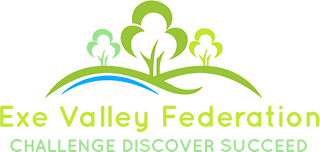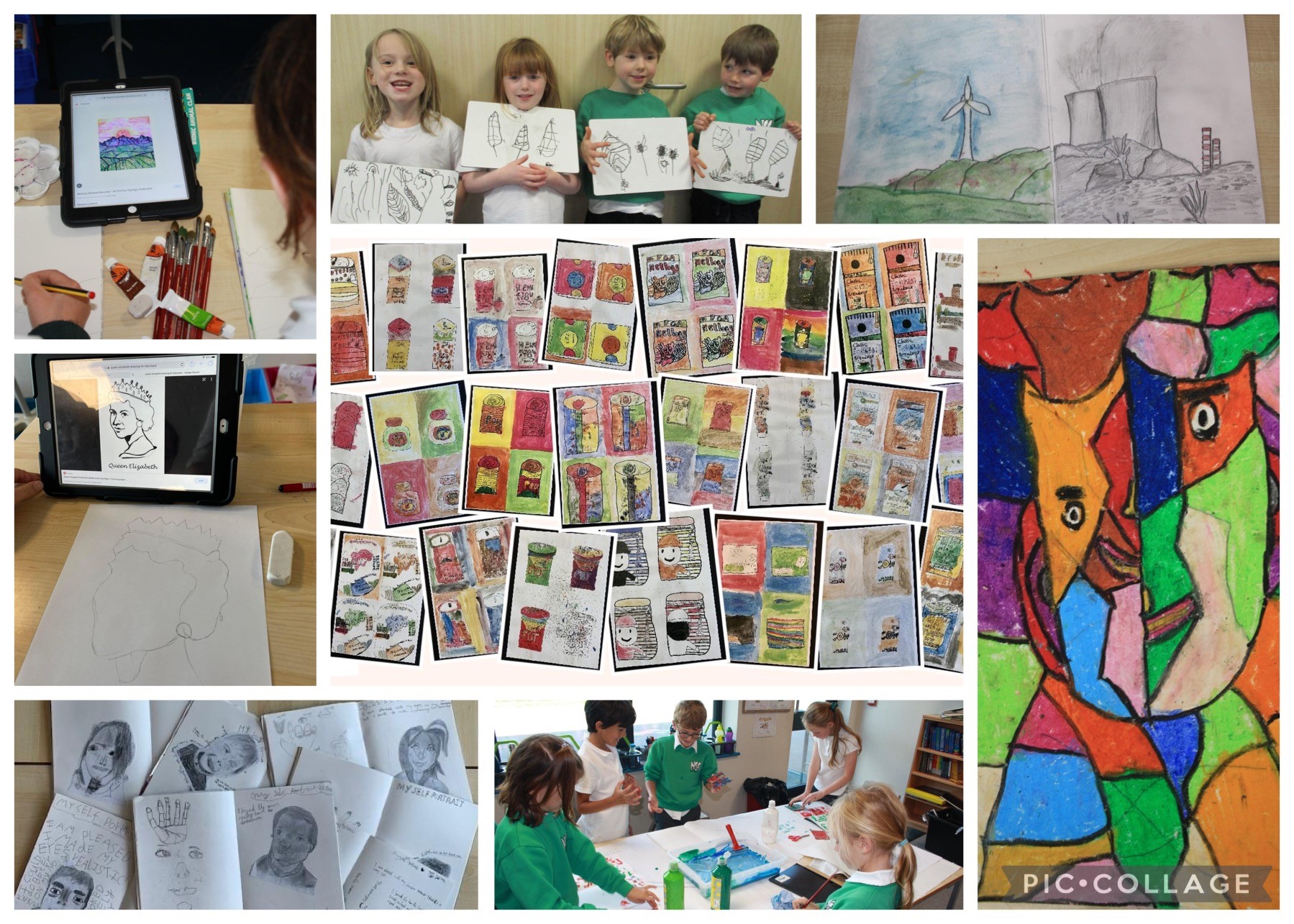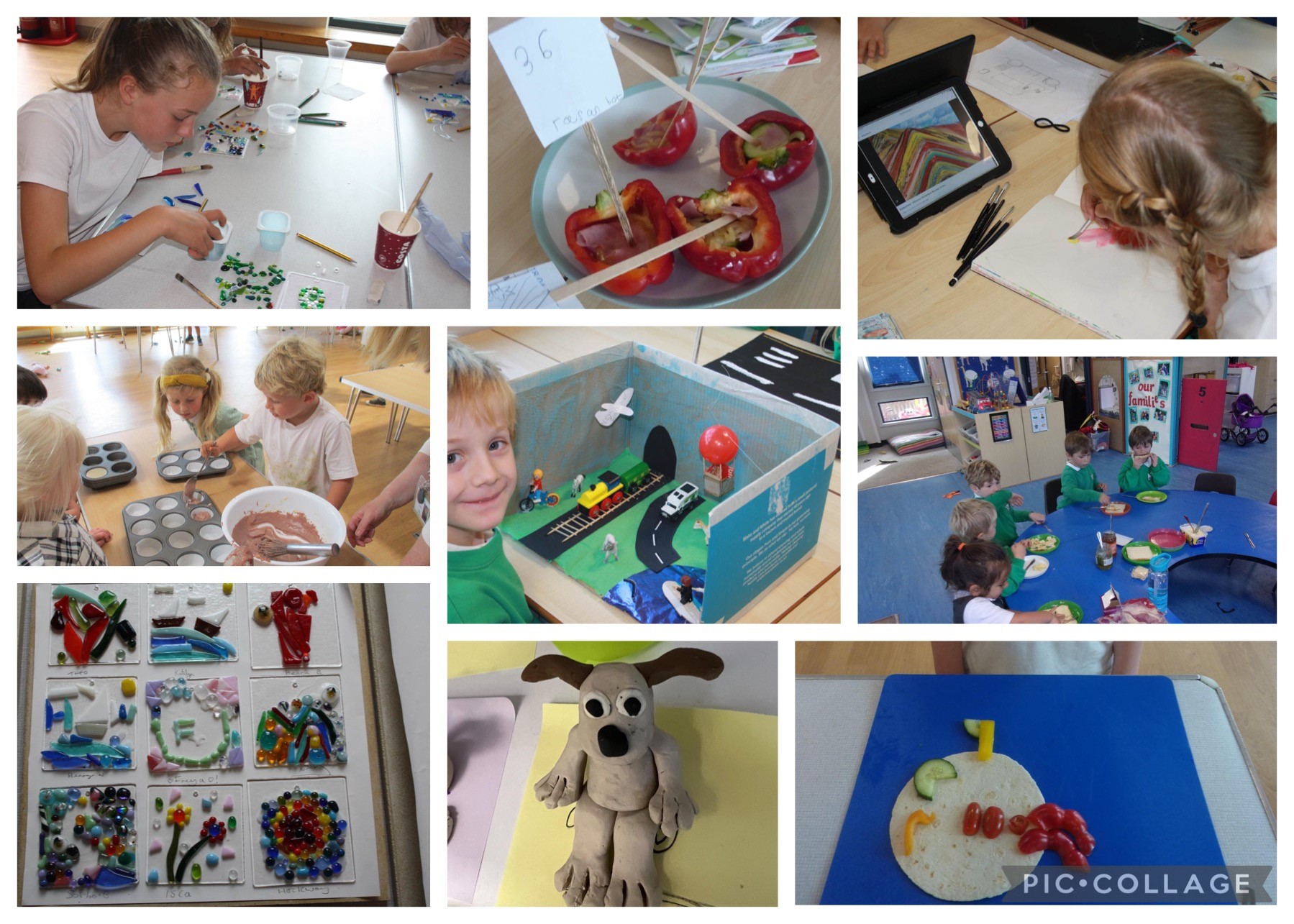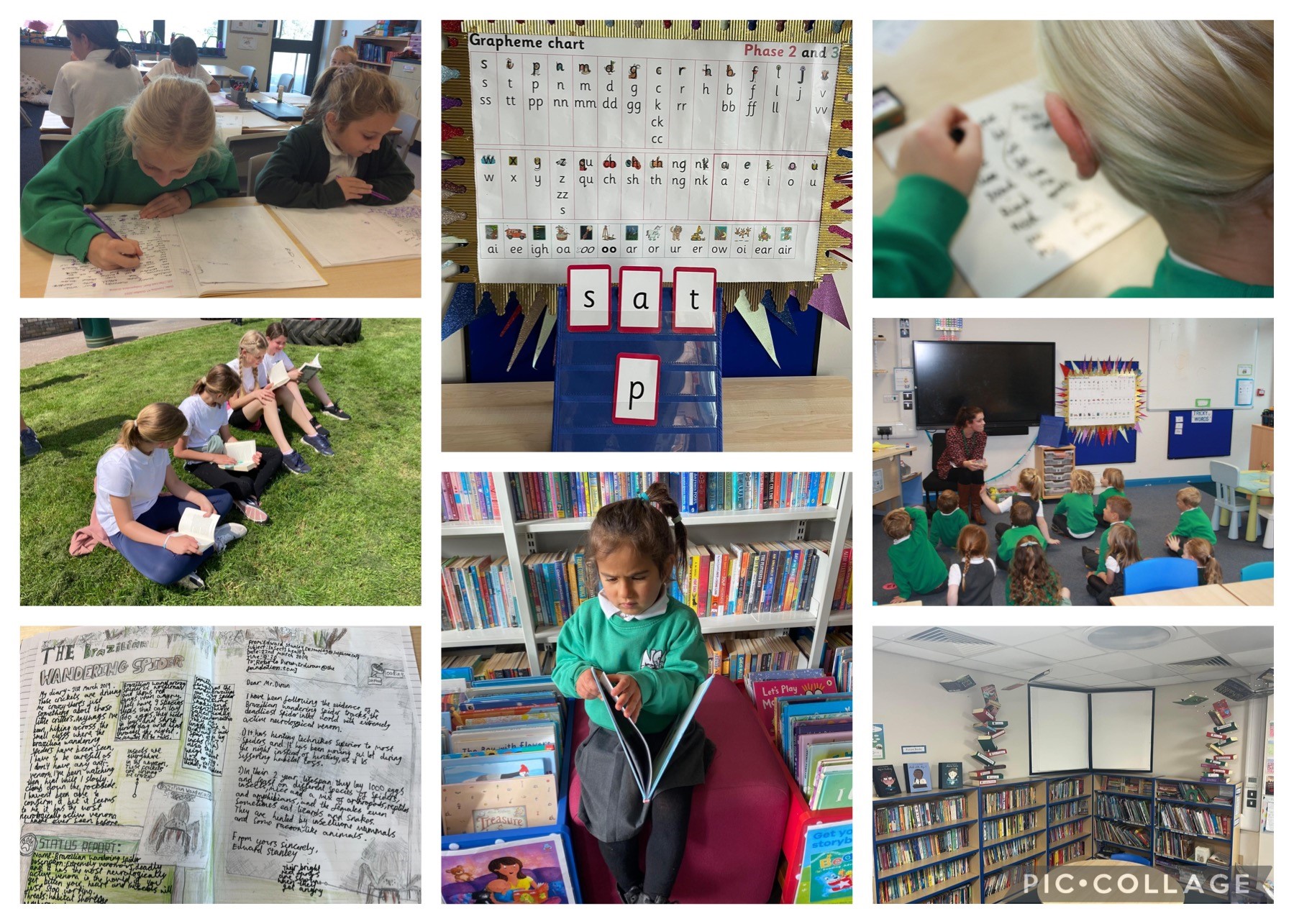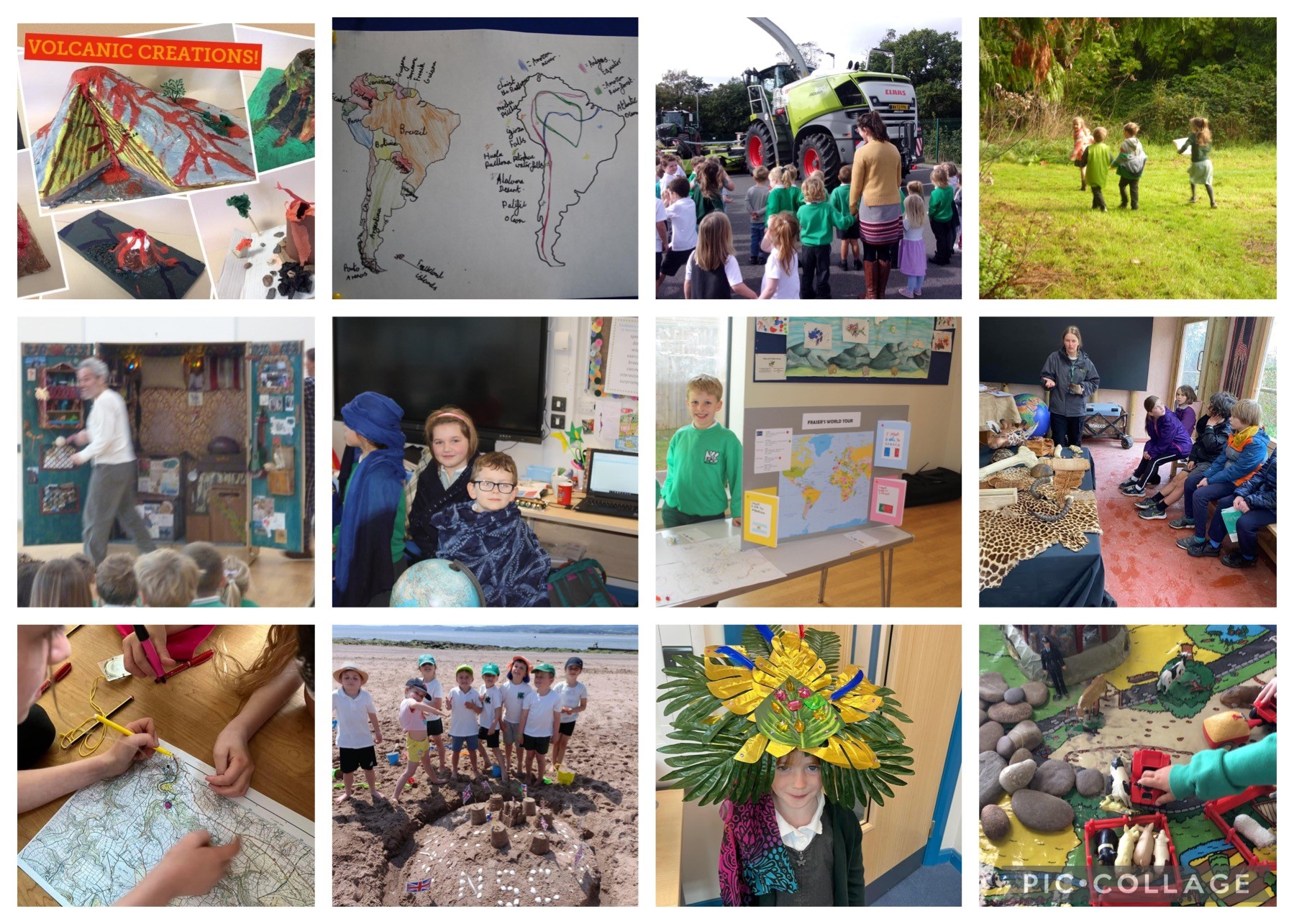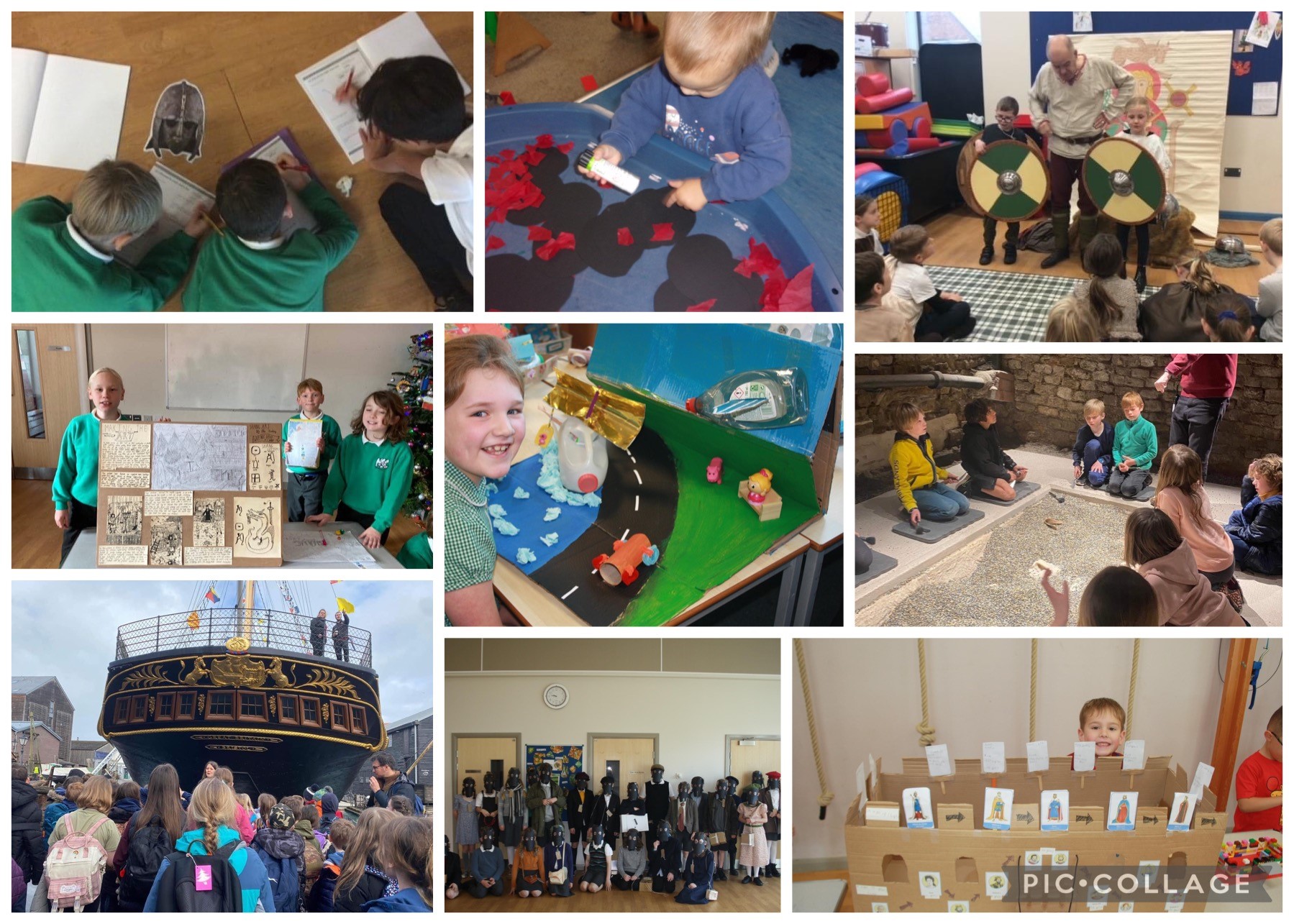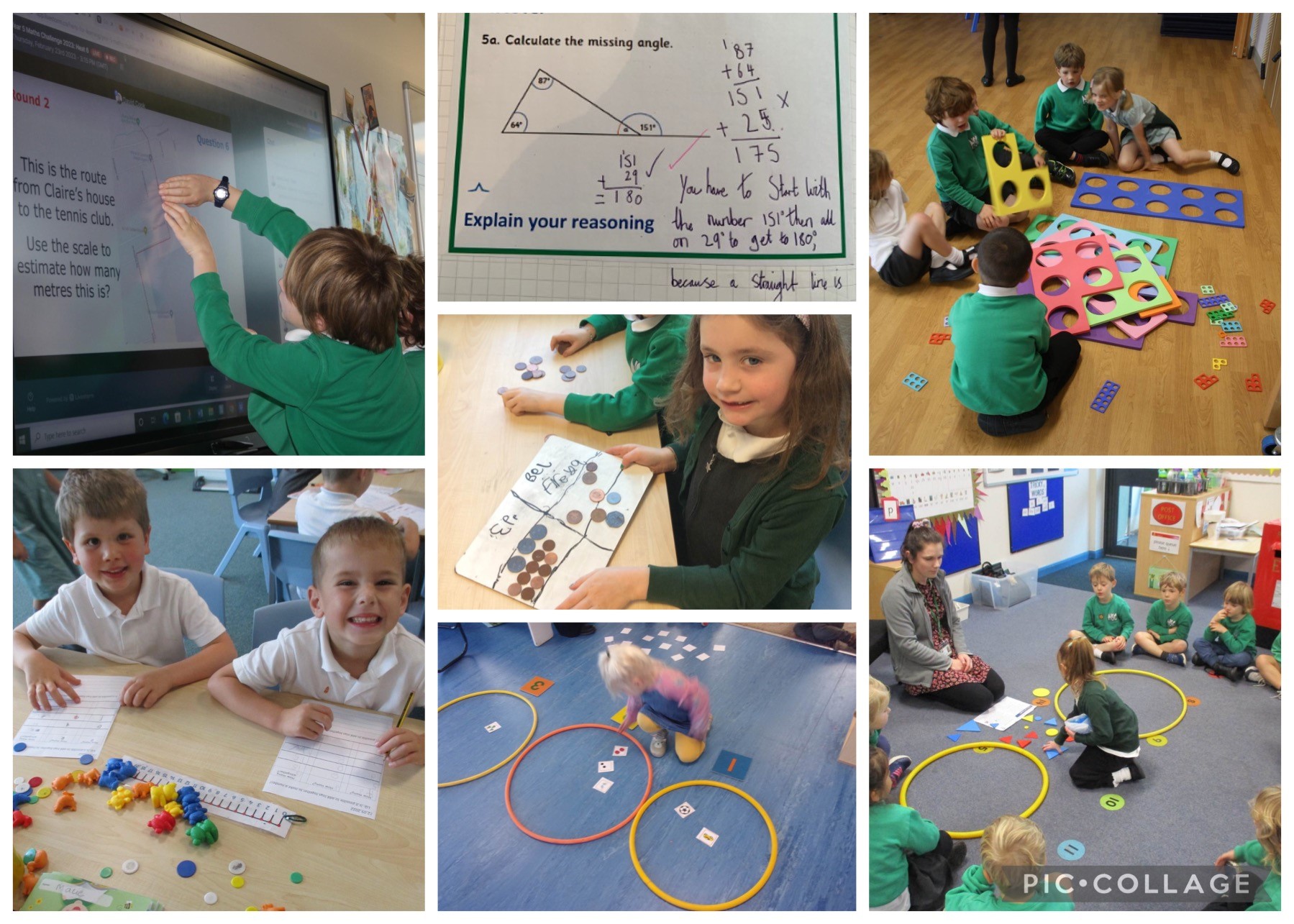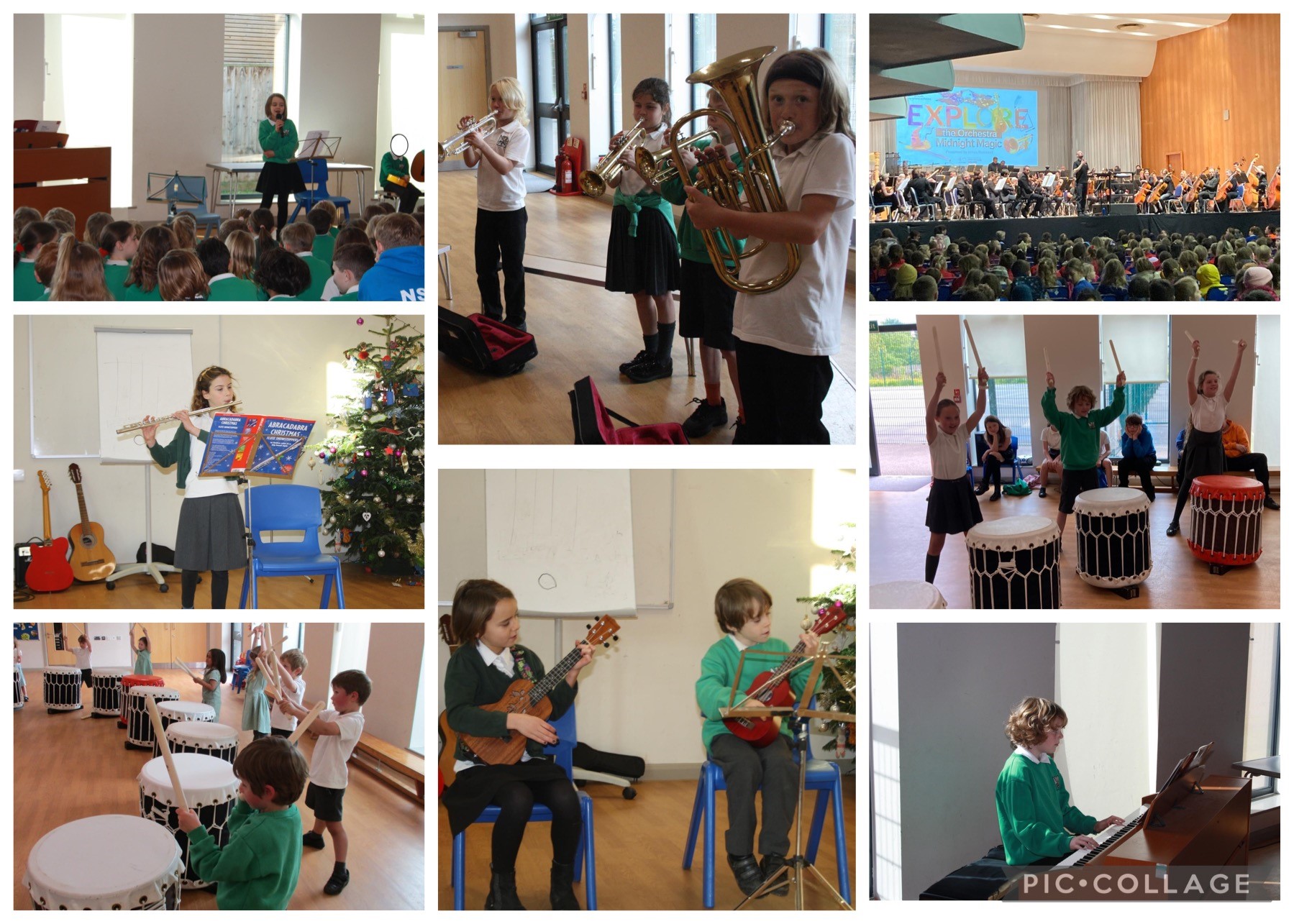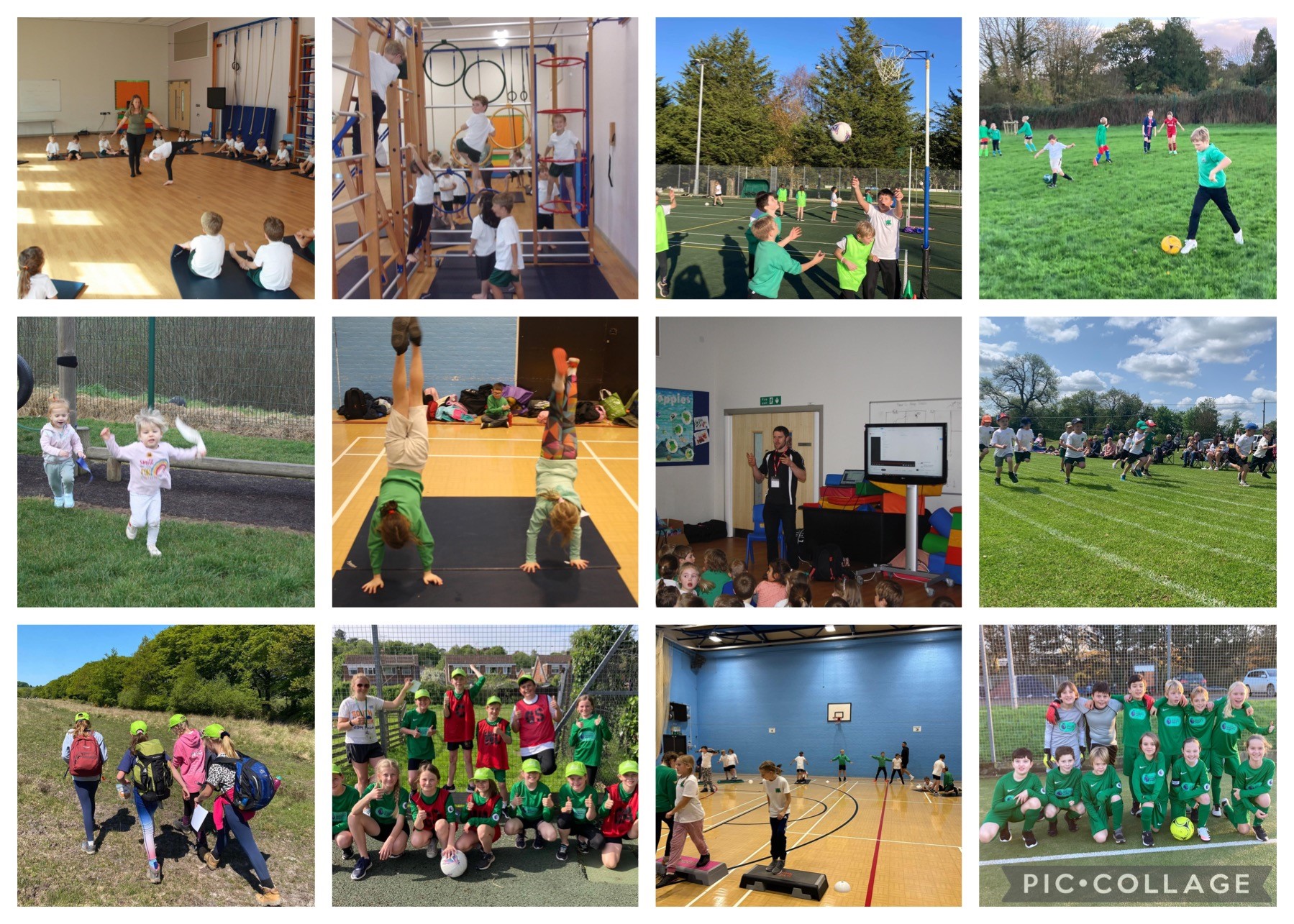Curriculum Overviews
Under each subject you will find a curriculum statement, which explains our vision for the subject, information on the implementation, and how the impact is measured.
Subject overviews outline the key content of each unit, from EYFS through to Y6, and are supported by progression documents, which show how skills and knowledge develop across the year groups.
For driver subjects (geography and history) and science, the 'Golden Threads' and Key Learning documents show how key concepts, knowledge and skills are revisited throughout the children's time at school.
Click on the links below to view each classes 2 year rolling programme.
EYFS Rolling Programme Class 2 Rolling Programme
Class 3 Rolling Programme Class 4 Rolling Programme
EYFS to KS1 Curriculum Transition
We are keen to ensure that all children transition through the different phases of their education as seamlessly as possible. One of the early transition points is moving from EYFS into KS1. The document below looks carefully at the Early Learning Goals and how these will support children and equip them with new skills as they embark on the curriculum from KS1 and beyond.
Art and Design
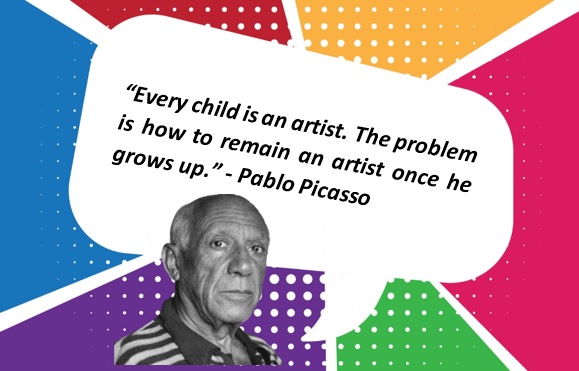
Our vision for our Art and Design curriculum is to encourage and enable our children to develop their creativity and skills by exploring a range of media and materials. As they progress through the school, children learn the skills of drawing, painting, collage, sculpture, textiles, printmaking, photography and graphic design and are given the opportunities to explore and evaluate their ideas. Children will be introduced to a range of different artists and will have opportunities to broaden their knowledge and understanding about the differences and similarities of these artists and make links to their own work.
At Newton St. Cyres we are committed to removing barriers from learning to ensure that all pupils are able to make progress across the curriculum. The document attached below identifies some of the ways that we do this in art and design:
Removing Barriers from Art and Design
Click on the links below to see some of the cover pages which we use within each art and design unit to support learning. The cover pages help the children to understand what knowledge and skills they will be covering, as well as key vocabulary for each unit. The cover sheet also contains the learning questions which have been formulated using the small steps found on the planning overview above.
Making Birds Animated Drawings Mixed Media
Flora and Fauna Materials & Images Set Design
Spirals Gestural Drawing Typography & Maps
Printmaking Shape and Colour Monotypes
Playful Making Drawing and Making Architecture
Click on the collage to see even more wonderful art and design in our curriculum gallery
Computing
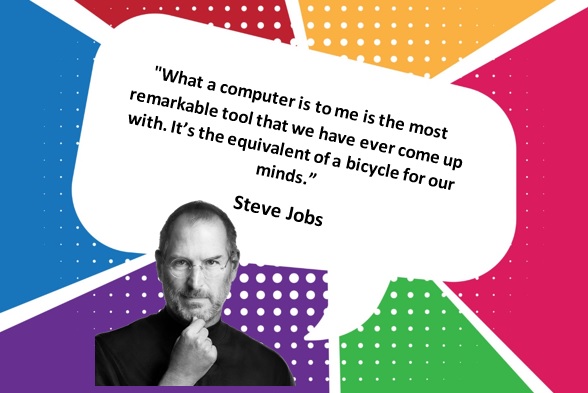
Technology is everywhere and will play a pivotal part in children’s lives. Therefore, we want to model and educate our children on how to use technology positively, responsibly and safely. We want our children to be creators, not consumers, and our broad curriculum encompassing computer science, information technology and digital literacy reflects this. We want our children to understand that there is always a choice with using technology and as a school we utilise technology (especially social media) to model positive use. We recognise that the best prevention for a lot of issues we currently see with technology/social media is through education. Building our knowledge in this subject will allow children to effectively demonstrate their learning through creative use of technology. We recognise that technology can allow children to share their learning in creative ways. We also understand the accessibility opportunities technology can provide for our children. Our knowledge-engaged curriculum has to be balanced with the opportunity for children to apply their knowledge creatively which will in turn help our children become skilful computer scientists. We encourage staff to try and embed computing across the whole curriculum to make learning creative and accessible. We want our children to be fluent with a range of tools to best express their understanding so that children have the independence and confidence to choose the best tool to fulfil the task, effectively preparing children for life in the twenty-first century.
At Newton St. Cyres we are committed to removing barriers from learning to ensure that all pupils are able to make progress across the curriculum. The document attached below identifies some of the ways that we do this in computing:
Removing Barriers from Computing
Click on the links below to see some of the cover pages which we use within each computing unit to support learning. The cover pages help the children to understand what knowledge and skills they will be covering, as well as key vocabulary for each unit. The cover sheet also contains the learning questions which have been formulated using the small steps found on the planning overview above.
Online Safety Turtle, Logo & Scratch Animated Stories
Computer Art Communication Radio Station
Presenting Skills (1/2) Presenting Skills (3/4) Kodu Programming
Using and Applying Scratch; Learning Loops Ultimate Bedroom
Computer Skills Online Safety (Y4) Online Safety (Y5)
Online Safety Word Processing Spreadsheets
Using the Internet Animation Coding
Technology Around Us Coding with Scratch Strategic Searching
Digital Painting Branching Databases 3D Modelling
Design and Technology
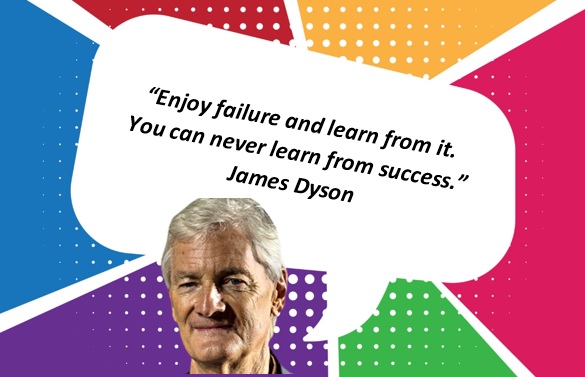
Within the Exe Valley Federation, we believe that Design Technology (DT) encourages inquisition and imagination, and promotes an engagement of children who may not ordinarily enjoy practical, hands-on activities. Design Technology teaches children to be aware of the world around them, and to make rational, economic and ecological based decisions, and to understand how their decisions affect people and the environment.
In lessons, pupils explore different questions that life presents them, and develop skills and attitudes to tackle, investigate and find answers to these questions. Pupils will also work as part of a team to solve problems, and take part in class and group discussion, working through different roles, and taking on board constructive criticism. Children look at different situations around the world and consider ways in which Design and Technology could provide positive contributions and improve the quality of life.
At Newton St. Cyres we are committed to removing barriers from learning to ensure that all pupils are able to make progress across the curriculum. The document attached below identifies some of the ways that we do this in design and technology:
Removing Barriers in Design and Technology
Click on the links below to see some of the cover pages which we use within each design and technology unit to support learning. The cover pages help the children to understand what knowledge and skills they will be covering, as well as key vocabulary for each unit. The cover sheet also contains the learning questions which have been formulated using the small steps found on the planning overview above.
Windmills Slingshot Cars Developing a Recipe
Puppets Castles Steady Hand Game
Baby Bear's Chair Electronic Posters Monitoring Devices
Pouches Eating Seasonally Bridges
Click on the collage to see even more wonderful D&T in our curriculum gallery
English
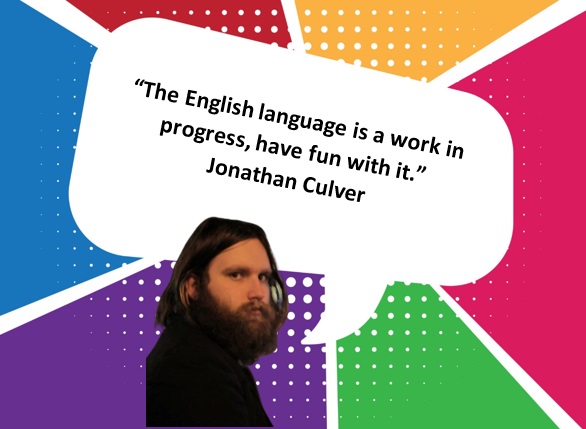
Reception Phonics Progression Year 1 Phonics Progression
For more support with Little Wandle Phonics, visit our Phonics page by clicking here.
The Exe Valley Federation believes that English is at the heart of all children’s learning. Reading, writing, speaking and listening enable children to communicate purposely and creatively. English is central to children’s emotional, social and intellectual development and is crucial in underpinning life skills and all aspects of the curriculum. We believe that reading is a life skill that every child should be entitled to. We want to inspire children through books, promoting a love of reading and empowering our children to become lifelong readers. We believe that teaching a high quality English curriculum will enable our children to communicate effectively throughout their lives, accessing information and sustaining personal and professional lives with fulfilment.
At Newton St. Cyres we are committed to removing barriers from learning to ensure that all pupils are able to make progress across the curriculum. The document attached below identifies some of the ways that we do this in reading and writing:
Removing Barriers in Writing Removing Barriers in Reading
Click on the collage to see even more wonderful English in our curriculum gallery.
Geography
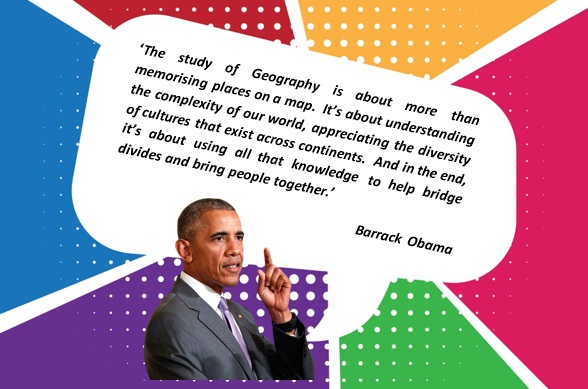
We aim to inspire a curiosity and fascination about the world and its people that will remain with our children for the rest of their lives, both in their immediate surroundings and wider afield. Our purpose is to instil a desire to investigate a variety of human and physical characteristics of different places, both local and afar, through purposeful research and careful questioning. To be well-rounded citizens, we believe children need to understand the differences between places and their cultures and be able to recognise how these change over time. Children will acquire the disciplinary geographical skills to help them understand, present, analyse and communicate a range of information either collaboratively or as an individual. We want children to recognize their distinct rural location and the diversity of their country and the wider world. Studying Geography will help them to make sense of the world around them and pique their curiosity in places and people – engaging them with the real world and spurring them into action.
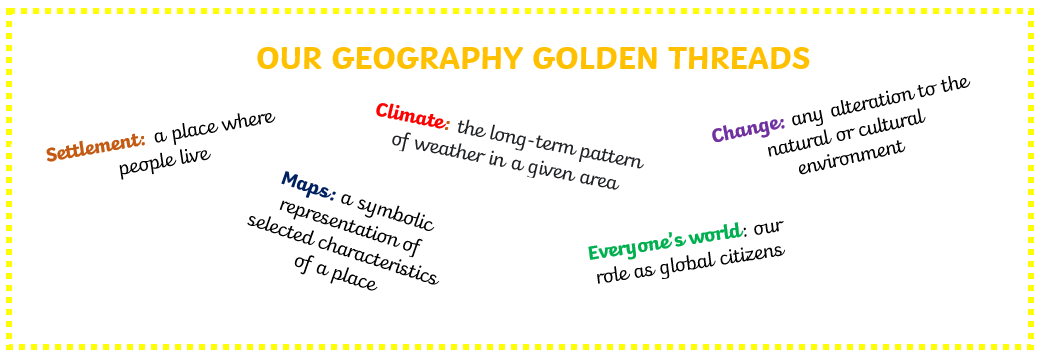
Our geography curriculum is woven together with golden threads that provide a framework for learning and help to deepen children's understanding of what is being taught. These golden threads are key concepts or issues that are integral to developing children's knowledge in History and Geography. As they move through the school, children encounter these golden threads many times, in a variety of contexts and situations, building on prior learning and broadening their understanding. By the time they move on to their next stage of learning at the end of Year 6, they will have a deep and secure understanding of the golden threads, inspiring a curiosity and fascination about the world and its people that will remain with them for the rest of their lives.
Geography Golden Threads Golden Threads Progression
At Newton St. Cyres we are committed to removing barriers from learning to ensure that all pupils are able to make progress across the curriculum. The document attached below identifies some of the ways that we do this in geography:
Removing Barriers in Geography
Click on the links below to see some of the cover pages which we use within each geography unit to support learning. The cover pages help the children to understand what knowledge and skills they will be covering, as well as key vocabulary for each unit. The cover sheet also contains the learning questions which have been formulated using the small steps found on the planning overview above. For geography, the Golden Threads are also included so that links can be made to prior and future learning.
Brazil The USA Our Changing World
Splendid SkiesLand Use Eastern Europe
Magical Mapping UK Geography Trade and Economics
Our Local Area Extreme Earth South America
Sensational Safaris Around the World Energy & Environment
Click on the collage to see even more wonderful Geography in our curriculum gallery
History
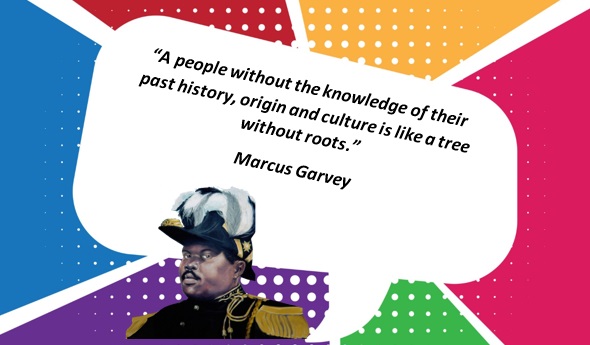
Our history curriculum aims to inspire our pupils’ curiosity to know more about the past and how it has shaped the present – and will shape the future. History helps pupils to understand the process of change, the diversity of societies as well as their own identity and the challenges of their time. We hope that their knowledge and historical skills will help them make more informed life choices and aspire to be open-minded citizens, making a valuable contribution to society: asking perceptive questions, thinking critically, weighing evidence and developing perspective. Our local area in the Exe Valley has a rich and diverse history and we believe this should drive our curriculum, along with familial stories so that children develop their understanding of the community in which they are rooted and the diversity of their own country, the UK and the wider world.
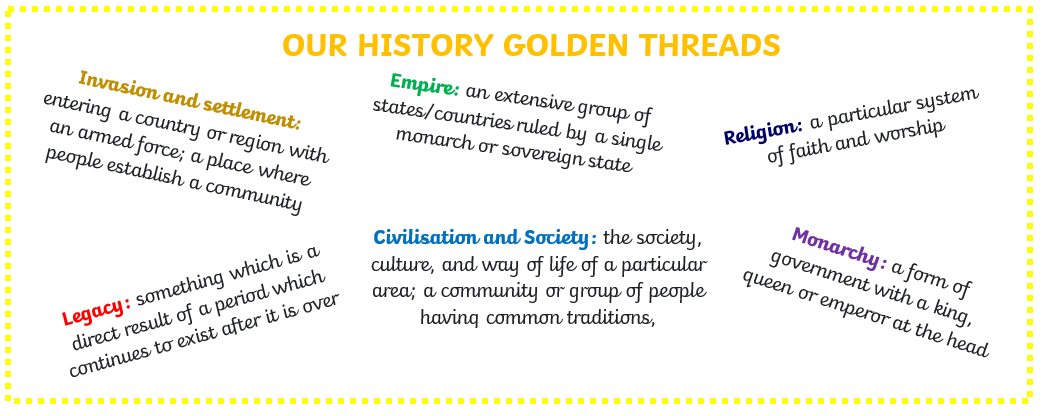
Our history curriculum is woven together with golden threads that provide a framework for learning and help to deepen children's understanding of what is being taught. These golden threads are key concepts or issues that are integral to developing children's knowledge in History and Geography. As they move through the school, children encounter these golden threads many times, in a variety of contexts and situations, building on prior learning and broadening their understanding. By the time they move on to their next stage of learning at the end of Year 6, they will have a deep and secure understanding of the golden threads, inspiring a curiosity and fascination about the world and its people that will remain with them for the rest of their lives.
History Golden Threads Golden Threads Progression
At Newton St. Cyres we are committed to removing barriers from learning to ensure that all pupils are able to make progress across the curriculum. The document attached below identifies some of the ways that we do this in history:
Click on the links below to see some of the cover pages which we use within each history unit to support learning. The cover pages help the children to understand what knowledge and skills they will be covering, as well as key vocabulary for each unit. The cover sheet also contains the learning questions which have been formulated using the small steps found on the planning overview above. For history, the Golden Threads are also included so that links can be made to prior and future learning.
Great Fire of London Stone Age The Victorians
War and Remembrance The Romans Vikings & Anglo Saxons
Nursing Ancient Greece Leisure & Entertainment
Travel and Transport Anglo Saxons Shang Dynasty
Kings and Queens World War II (LKS2) World War II (UKS2)
Click on the collage to see even more wonderful History in our curriculum gallery
Languages
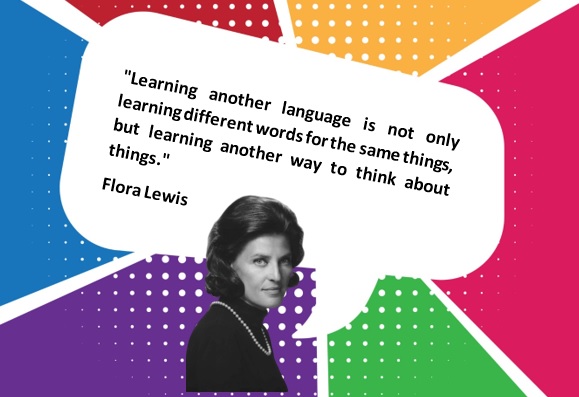
Our vision for Languages is that the learning of a language helps to equip pupils with the knowledge and cultural capital they need to succeed in life. It encourages children to appreciate and celebrate difference and provides the foundation for learning further languages. It should enable pupils to study and work in other countries.
At Newton St. Cyres we are committed to removing barriers from learning to ensure that all pupils are able to make progress across the curriculum. The document attached below identifies some of the ways that we do this in modern foreign languages:
Click on the links below to see some of the cover pages which we use within each languages unit to support learning. The cover pages help the children to understand what knowledge and skills they will be covering, as well as key vocabulary for each unit. The cover sheet also contains the learning questions which have been formulated using the small steps found on the planning overview above.
In The Classroom Healthy Lifestyles
Learning French Little Red Riding Hood
I am Able... Presenting Myself
Mathematics
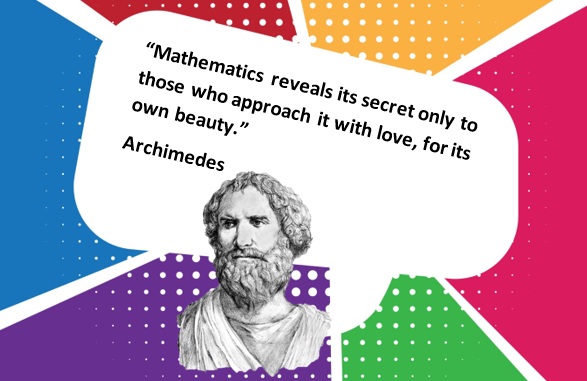
Addition & Subtraction Policy Multiplication & Division Policy
Our vision for maths is based on a ‘mastery’ approach to teaching and learning in mathematics and it is our aim that all pupils:
- Become fluent in the fundamentals of mathematics so that they develop conceptual understanding and the ability to recall and apply knowledge rapidly and accurately.
- Can solve problems by applying their mathematics to a variety of problems with increasing sophistication, including in unfamiliar contexts and to model real-life scenarios.
- Can reason mathematically by following a line of enquiry and develop and present a justification, argument or proof using mathematical language.
At Newton St. Cyres we are committed to removing barriers from learning to ensure that all pupils are able to make progress across the curriculum. The document attached below identifies some of the ways that we do this in maths:
Click on the collage to see even more wonderful Maths in our curriculum gallery
Music
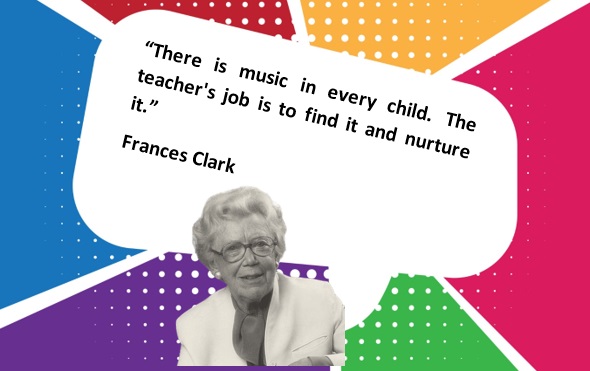
The vision for our Music curriculum is for it to be an engaging, enjoyable learning experience which inspires creativity and self-expression. We aim to foster a love of music in our pupils by exposing them to diverse musical experiences and igniting a passion for music. Listening and responding to different musical styles and finding their voices as singers, performers and composers enables our pupils to become confident, reflective musicians.
At Newton St. Cyres we are committed to removing barriers from learning to ensure that all pupils are able to make progress across the curriculum. The document attached below identifies some of the ways that we do this in music:
Click on the links below to see some of the cover pages which we use within each music unit to support learning. The cover pages help the children to understand what knowledge and skills they will be covering, as well as key vocabulary for each unit. The cover sheet also contains the learning questions which have been formulated using the small steps found on the planning overview above.
Pitch and Tempo Pentatonic Melodies Composition
Musical Vocabulary Musical Motifs Singing Technique
Orchestral Instruments Indian Music Musical Theatre
Myths and Legends African Drums (WCET) African Drums (WCET)
African Call & Response Taiko (WCET) Composition & Notation
Pulse and Rhythm Taiko Drums (WCET) Taiko Drums (WCET)
Timbre and Rhythm BSO Sea Stories BSO Sea Stories
Musical Storytelling Singing Technique (WW2)Songs of WW2
Pitch Musical Me Pitch, Tempo & DynamicPop Art
Click on the collage to see even more wonderful Music in our curriculum gallery
Physical Education
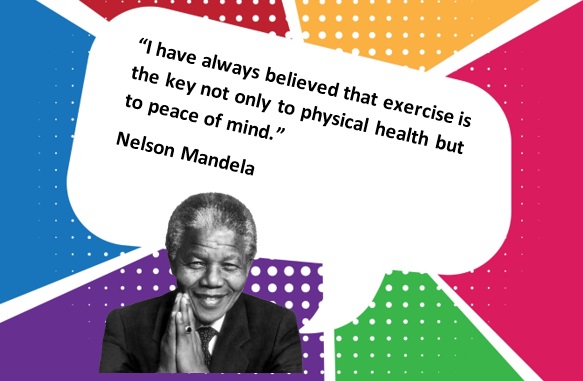
Our vision for PE is for all children to experience excellent physical education, school sport and physical activity that will lead to life-long participation. Our aim is to provide a high quality, inclusive physical education curriculum which inspires all pupils to succeed and excel. We focus on developing pupils’ physical literacy required to tackle a range of activities and encourage life-long participation in fitness. We target opportunities for pupils to become physically confident in a way which supports their health and fitness as well as embed values and respect.
Our PE curriculum is woven together with golden threads that provide a framework for learning and help to deepen children's understanding of what is being taught. These golden threads are key concepts that are integral to developing children's knowledge and skills in physical education. As they move through the school, children encounter these golden threads many times, in a variety of sporting disciplines, building on prior learning and broadening their understanding and skillset. By the time they move on to their next stage of learning at the end of Year 6, they will have a deep and secure understanding of the golden threads, providing them with a secure knowledge of healthy living and a deep rooted passion for physical activities.
At Newton St. Cyres we are committed to removing barriers from learning to ensure that all pupils are able to make progress across the curriculum. The document attached below identifies some of the ways that we do this in PE:
Click on the collage to see even more wonderful PE in our curriculum gallery .
Click here to view our commitment to physical education in the wider community
PSHE
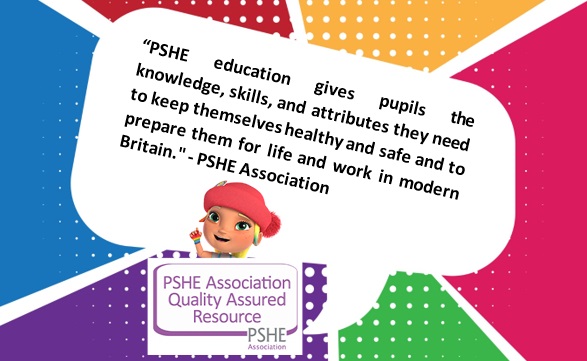
Our vision for PSHE [which incorporates the National Curriculum non-statutory guidance for Citizenship is to allow our children to become responsible and active global citizens. We want our children to develop as great communicators, who are confident to share their views and opinions. We aspire to ensure PSHE is at the core of everything we do. By doing so it allows our children to blossom into confident, independent, reflective and responsible members of the ever changing society around them.
At Newton St. Cyres we are committed to removing barriers from learning to ensure that all pupils are able to make progress across the curriculum. The document attached below identifies some of the ways that we do this in PSHE:
Religious Education
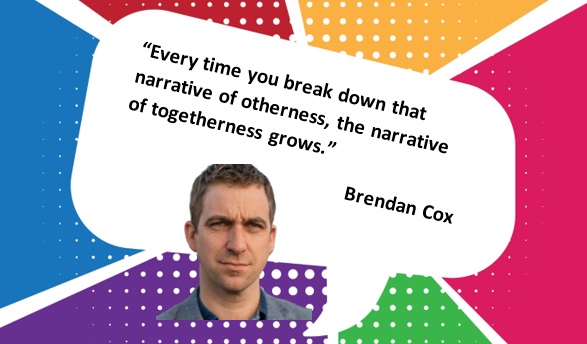
Our vision for Religious Education is to inspire a curiosity about people through exploring world views held so that pupils can gain authentic knowledge, understanding and the skills needed to handle questions raised by religion and belief, reflecting on their own ideas and ways of living. R.E. has an important place in the curriculum: it provides a safe space for young people to develop their understanding of people, cultures, religious and non-religious world views. Children will gain a coherent understanding, thus preparing them for their journey through education and life in twenty-first century Britain. R.E. will contribute to children’s personal and academic development. As well as gaining knowledge and understanding of religions and beliefs, the children will develop their own understanding of the world and how to live, in the light of their learning. R.E. will make a significant contribution to children’s spiritual, moral, social and cultural development as well as providing opportunities to explore British values.
At Newton St. Cyres we are committed to removing barriers from learning to ensure that all pupils are able to make progress across the curriculum. The document attached below identifies some of the ways that we do this in RE:
Click on the links below to see some of the cover pages which we use within each religious education unit to support learning. The cover pages help the children to understand what knowledge and skills they will be covering, as well as key vocabulary for each unit. The cover sheet also contains the learning questions which have been formulated using the small steps found on the planning overview above.
How Do Muslims Live? Following God Creation and Science
Easter Muslim Festivals Hinduism
Good News What Kind of World Hinduism
Sacred Places Better Place God or Not
Who Made the World? Hinduism Muslim in Britain Today
Faith Communities Trinity Holy and Loving God
What is God Like? What is Good Friday? The Torah
Judaism Hinduism Creation Story
Judaism Pt.2 Pentecost Why are Hindus good?
Science
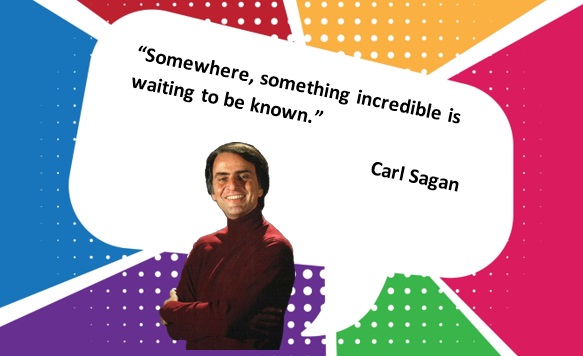
Working Scientifically Golden Threads
Our vision for Science is to enable children to confidently explore and discover the world around them, so that they have a deeper understanding of the world we live in. We realise that young children are naturally curious and passionate about learning; we provide a stimulating science curriculum that nurtures children’s natural curiosity and their on-going intellectual development. Through a hands-on, inquiry-based curriculum, children will experience the joy of having wonderful ideas, exploration and investigation – that is, the joy of finding out. Our aim is that these stimulating and challenging experiences help children secure and extend their scientific knowledge and vocabulary. We believe that these opportunities will ensure that our children are confident, life-long learners who will explore the world around them.
At Newton St. Cyres we are committed to removing barriers from learning to ensure that all pupils are able to make progress across the curriculum. The document attached below identifies some of the ways that we do this in science:
Click on the links below to see some of the cover pages which we use within each science unit to support learning. The cover pages help the children to understand what knowledge and skills they will be covering, as well as key vocabulary for each unit. The cover sheet also contains the learning questions which have been formulated using the small steps found on the planning overview above.
Everyday Materials Rocks Living Things & Habitats
The Environment Animals Inc Humans 3 Animals Inc Humans 4
Spring to Summer Forces and Magnets Scientific Enquiry Skills
Animals Inc Humans Living Things/Habitats Materials
Scientists & Inventors Scientific Enquiry Skills Evolution
Autumn to Winter Animals Inc. HumansEarth and Space
Living Things & Habitats Light (Y4) Light (Y6)
